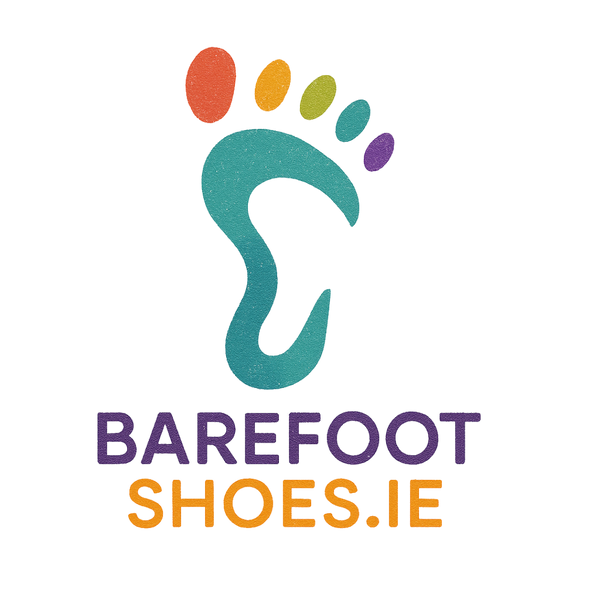Living with autism often means experiencing the world differently, especially when it comes to sensory input. For many autistic individuals, traditional shoes can feel restrictive, uncomfortable, or overwhelming. That's where barefoot shoes offer a game-changing alternative.
Understanding Sensory Sensitivities and Footwear
Research indicates that between 53% and 95% of autistic people experience sensory processing differences
1. People with autism frequently experience heightened sensory sensitivities, and footwear can be a significant source of discomfort. Tight shoes, rigid soles, and constricting materials can trigger discomfort or sensory overload throughout the day. Barefoot shoes address these concerns by working with the body's natural design rather against it.
Key Benefits of Barefoot Shoes for Autistic Individuals
1. Reduced Sensory Overload
Barefoot shoes feature minimal cushioning and thin, flexible soles that allow natural foot movement. This design reduces the sensory "noise" that thick, cushioned shoes create. According to research on minimalist footwear, "barefoot shoes, with a minimal and natural foot environment, reduce the sensory 'masking' effect that traditional shoes create"
2. This natural approach helps autistic individuals feel more grounded and less overwhelmed.
2. Enhanced Proprioception
Proprioception—the body's ability to sense its position in space—is crucial for balance and coordination. Studies have shown that proprioceptive processing difficulties are common among children with autism spectrum disorders
3. The thin soles of barefoot shoes provide direct ground feedback, and research confirms that "minimalist footwear can improve sensory feedback from the foot, leading to better postural control and stability"
4.
Recent studies demonstrate that minimal shoes improve stability during both standing and walking, independent of visual conditions
5. Many autistic individuals report feeling more confident and stable in their movements when wearing barefoot shoes.
3. Natural Toe Splay and Comfort
Traditional shoes squeeze toes together, creating pressure points. Barefoot shoes feature wide toe boxes that allow toes to spread naturally. This eliminates pinching and pressure, making them ideal for those with tactile sensitivities—a common challenge for individuals with autism.
4. Breathable, Soft Materials
Quality barefoot shoes use soft, breathable materials that reduce skin irritation. Brands like Leguano, Belenka, and Barebarics—our top sellers—prioritize comfort without sacrificing durability, addressing the sensory preferences many autistic individuals have regarding fabric textures.
5. Predictable, Consistent Feel
The minimalist design of barefoot shoes provides a consistent sensory experience. There are no unexpected pressure points or shifting cushions, which helps reduce anxiety for those who prefer predictability in their sensory environment.
6. Cognitive and Developmental Benefits
Emerging research suggests additional benefits beyond comfort. A recent study found that barefoot walking can effectively enhance cognitive ability in adolescents
6. For children with autism, walking barefoot or in minimal footwear "helps calm down their nerves and lessens their stress while the varying textures awaken their world"
7.
Real-World Impact: What Parents and Caregivers Notice
Many parents report that their autistic children:
- Show less resistance to wearing shoes
- Experience fewer meltdowns related to footwear
- Demonstrate improved balance and coordination
- Appear calmer and more focused throughout the day
Research supports these observations, with studies showing that interventions targeting the proprioceptive system may reduce behavioral problems in children with autism
8.
Choosing the Right Barefoot Shoes
When selecting barefoot shoes for someone with autism, consider:
-
Ease of use: Look for slip-on styles or simple closures
-
Texture preferences: Some prefer smooth materials, others like textured surfaces
-
Transition period: Start with short wearing periods and gradually increase
-
Proper sizing: Use our individual brand size charts to ensure the perfect fit
Our best-selling models—Go, Beat, Rebound, and Zing—offer various styles suitable for different sensory preferences and activities.
Making the Transition
Switching to barefoot shoes is a journey. Start slowly:
- Wear them for short periods at home
- Gradually increase wearing time
- Listen to feedback about comfort
- Be patient—feet need time to adapt
Research shows that even brief exposure to minimalist footwear can enhance foot proprioception and sensory feedback
4.
Supporting Foot Health and Well-Being
Barefoot shoes aren't just about comfort—they support long-term foot health. By allowing natural foot development and movement, they help prevent common issues like flat feet and plantar fasciitis, conditions we frequently see in our customer community.
Your Questions Answered
Will barefoot shoes work for my child with autism?
Every individual is different, but many families report positive results. Research supports the benefits of increased sensory feedback for individuals with sensory processing differences. The key is finding the right fit and allowing time for adjustment.
How do I know which size to choose?
We provide detailed size charts for each brand. If you're unsure, our team is here to help—just reach out via email.
What if they don't work out?
We understand that finding the right shoe is important. Check our return policy for peace of mind.
Experience the Difference
At barefootshoes.ie, we're committed to helping everyone discover the comfort and freedom of barefoot footwear. Whether you're managing sensory sensitivities, supporting natural foot development, or simply seeking healthier footwear options, we're here to help.
Ready to explore barefoot shoes for yourself or a loved one? Browse our collection of trusted European brands, all designed with comfort, quality, and natural movement in mind.
Have questions about barefoot shoes and autism? Contact us—we typically respond within one day and we're happy to help you find the perfect fit.
References.


